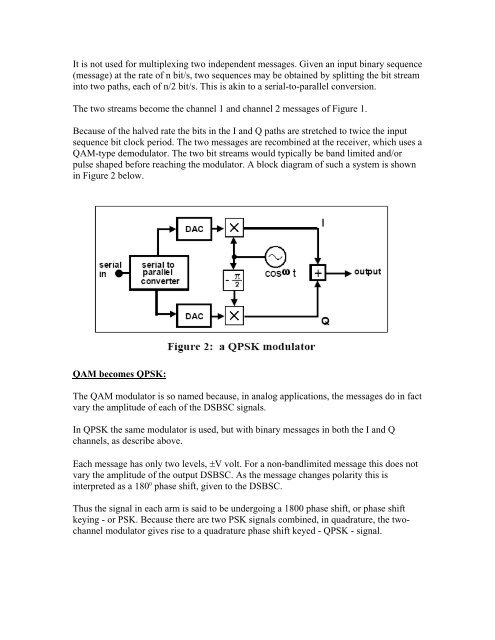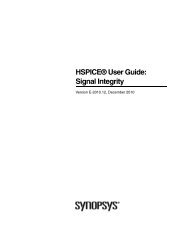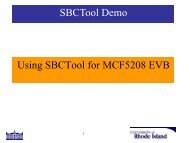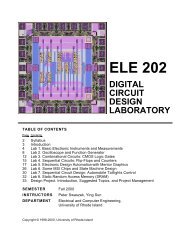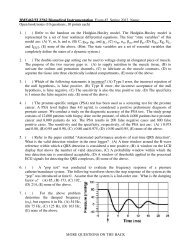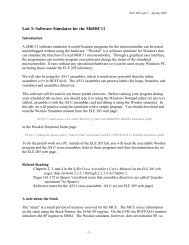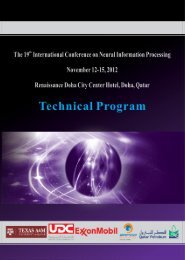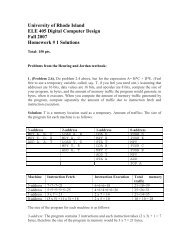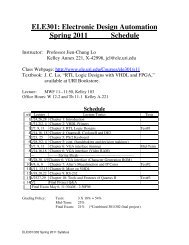QAM and QPSK:
QAM and QPSK:
QAM and QPSK:
Create successful ePaper yourself
Turn your PDF publications into a flip-book with our unique Google optimized e-Paper software.
It is not used for multiplexing two independent messages. Given an input binary sequence<br />
(message) at the rate of n bit/s, two sequences may be obtained by splitting the bit stream<br />
into two paths, each of n/2 bit/s. This is akin to a serial-to-parallel conversion.<br />
The two streams become the channel 1 <strong>and</strong> channel 2 messages of Figure 1.<br />
Because of the halved rate the bits in the I <strong>and</strong> Q paths are stretched to twice the input<br />
sequence bit clock period. The two messages are recombined at the receiver, which uses a<br />
<strong>QAM</strong>-type demodulator. The two bit streams would typically be b<strong>and</strong> limited <strong>and</strong>/or<br />
pulse shaped before reaching the modulator. A block diagram of such a system is shown<br />
in Figure 2 below.<br />
<strong>QAM</strong> becomes <strong>QPSK</strong>:<br />
The <strong>QAM</strong> modulator is so named because, in analog applications, the messages do in fact<br />
vary the amplitude of each of the DSBSC signals.<br />
In <strong>QPSK</strong> the same modulator is used, but with binary messages in both the I <strong>and</strong> Q<br />
channels, as describe above.<br />
Each message has only two levels, ±V volt. For a non-b<strong>and</strong>limited message this does not<br />
vary the amplitude of the output DSBSC. As the message changes polarity this is<br />
interpreted as a 180 0 phase shift, given to the DSBSC.<br />
Thus the signal in each arm is said to be undergoing a 1800 phase shift, or phase shift<br />
keying - or PSK. Because there are two PSK signals combined, in quadrature, the twochannel<br />
modulator gives rise to a quadrature phase shift keyed - <strong>QPSK</strong> - signal.


